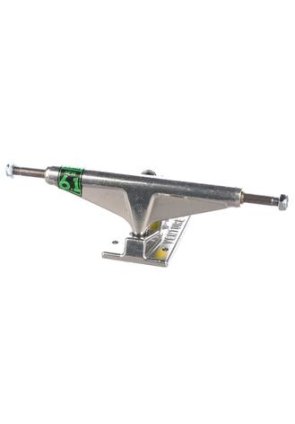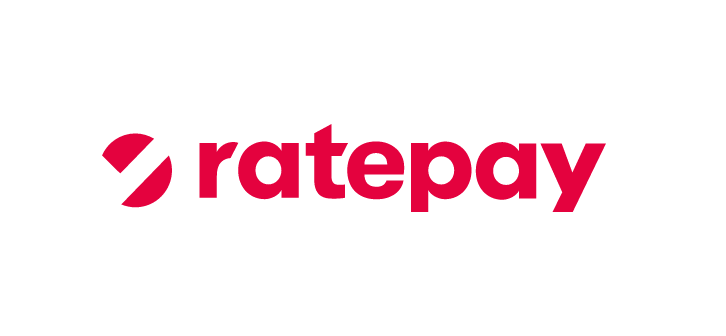Venture trucks
- Right place
- right time
- right truck
- The truck gods had mercy on the small truck company Venture and threw them a bone.
Eric Swenson and Fausto Vitello, the man behind Independent, had been working on an inexpensive truck that would be plain and simple (no anodized colors), but would have the design qualities of a higher priced truck. At the same time, skating was developing at a rapid pace, freestyle and vertical skating were merging, and from this big bang, street skating was born. While the established brands offered standard-sized freestyle trucks and vert trucks, street skaters were looking for boards and trucks that suited their needs. Venture launched its first truck at exactly this time and became known as the manufacturer of the first "street" truck. The simpler truck with its rougher appearance perfectly reflected the attitude of street skaters. "We focused on the street team from the beginning," says Keith Cochrane, an original team rider who became co-owner and team manager a few months after Venture's launch. He also heads up national and international sales and continues to be responsible for development.

Venture has done better than any other axle company before: "It's done better than anyone expected," continues Cochrane. "When it started, it was supposed to be a cheap truck, something affordable for kids." Venture started so underground that the company didn't even advertise. "It was a side project," says Cochrane. "In the beginning, there was no push, no advertising, just a cheap skate truck." But even the lack of marketing couldn't stop the kids from noticing. Venture landed a big coup when Mark Gonzales decided to ride for them. It's a big deal when arguably the most popular street skater in the world rides for a budget truck company. If Venture's street reputation wasn't already solidified, it was cemented by Gonz's first Venture commercial when the company finally started advertising. Venture's success was a byproduct of listening to and feeling what the new generation of skaters wanted, and catering to those desires rather than trying to second guess the market. "Venture sort of fell into the street category by osmosis," says Cochrane. "It wasn't like it was really targeted."
Although Venture's first rider was Eddie Reategui, a vert skater, the team was quickly bolstered with some of the best street skaters: Jason Lee, Mark Gonzales, Ray Barbee, Sean Sheffey and Mike Vallely. These riders were instrumental in shaping street skating and gave the company a gritty street legitimacy that other polished truck companies couldn't easily shed. Steve Rocco was initially in charge of Venture's advertising, and when the company finally started advertising a few months after launch, he brought the chaotic atmosphere of street skating to Venture's marketing. He deviated from the traditional approach and created innovative ads such as the infamous "Win a day skating with Gonz" competition. It all seemed like a masterpiece of ghetto art. Since Venture didn't have as much to lose as larger companies like Tracker, Indy or Gullwing, the company was able to take more risks. Venture adapted to the fickle street market much faster than the big boys by mimicking street skating, gritty and cheap with an evolving sense of identity. Rocco and the team built up this persona until Venture became known as Street Achse. At this point, there was little else out there other than street skating. Freestyle was the way of the hula hoop, and vertical terrain in skateparks around the world was becoming increasingly rare.

Showing up at the right time with the right image is one thing, climbing to the top of the truck mountain and staying there is another. Cochrane understood that to solidify Venture's place in the market, more specifically on the famous ledges of San Francisco's Embarcadero, the street skating center of the universe in the early '90s, he needed to have his ear to the ground. Street skaters started riding on boards that barely qualified as twigs, with wheels so small you could practically touch them with tweezers. Because of the new micro equipment, a new, flatter truck was needed. Not just a cheaper truck or one that turned differently, but a completely new design, because the higher profile trucks just didn't work when you put them on a skinny board with tiny wheels. "The market has changed," says Cochrane. "When something changes in skateboarding, it happens overnight.
Zen and the art of truck design
Cochrane and Swenson needed a truck that was suitable for the smaller equipment of the street skaters and set about developing it. However, they didn't run to MIT to get a physics professor. Instead, they took the Bedrock approach and started building rough models themselves. Was that unscientific? "Absolutely," laughs Cochrane. "We worked with a lot of Bondo and clay. When developing the trucks, they had skateboarding as a whole in mind, rather than a sterile geometric perspective.
It took them a few months to develop a working axle with a lower profile. "It's really hard to get the geometry right when you're pulling everything in," says Cochrane. "It was a difficult challenge to design the truck so that it could turn and stay low at the same time. But they succeeded, and in 1992 Venture launched the Featherlight, the first low profile truck specifically for the street skating market. "When the Featherlight came on the market, it was an absolute hit," says Cochrane with a laugh. "Everyone wanted it. Jovontae Turner and all the old street kids from Embarcadero were like, 'Hey man, we want a lower truck, we're going smaller wheels'."
For all of Venture's five major design changes, one thing has remained the same: the way the company designs and tests the experimental trucks. "We do everything ourselves," says Cochrane. "We work on samples, determine the look we want, create the geometry, do some testing, see if it works, and then move on. It can take anywhere from a few months to a year to get it right. Each version is tested by Cochrane himself, and he doesn't allow himself to be rushed. "We wait until we have everything in place before we release it," he says. "It takes a while to go from sample to mold. We make permanent molds. It's an expensive process, especially in the United States. We make all of our own axles here in San Francisco.

Indy's little brother?
One of the reasons Venture was able to offer a higher quality truck at a lower price is that it shared the foundry that Independent had established. Although designing and casting axles is expensive, Venture had a bit of a head start because it was able to capitalize on Vitello's experience with Indy. But they are, as Cochrane points out, completely different companies. "I don't work for Independent," he explains when asked about the links between the two companies. But by sharing a foundry with Indy, Venture benefits from the quality control system put in place by Independent, from design and casting to shipping. Cochrane attributes much of Venture's success to this streamlined system: "We have no delivery issues, we deliver every day, five days a week, 52 weeks a year." In addition to the shared foundry, there is also a sense of fraternal competition between Venture and Indy. According to the TransWorld SKATEboarding Business Retailer Surveys, which have tracked popular brands since 1996, Venture has consistently ranked second in the truck market, which is impressive considering the company's humble roots.
Independent has consistently taken first place. Cochrane doesn't seem to hold anything against Indy and constantly pays them respect, but his competitive side flares up when it comes to who really owns first place. "I always read in TransWorld Business and everywhere else that Independent is number one, but that's a travesty," he says. "You call Reggie Barnes at Eastern Skateboard Supply, South Shore, ASAP Distribution in Germany and all the big distributors in the world, Venture is number one. I know how many trucks they make in the foundry, they make more Ventures than anything else."
I called the sales department at Eastern Skateboard Supply and talked to Hunter Davis, who said that Indy and Venture were generally neck and neck for first place.
And now? In recent years, Venture has been in a comfortable position, which can easily lead to inertia and laziness. The company controls a large part of the market, which can be dangerous because it's easy to lose market share when you have a sure thing instead of taking risks with innovation. If you look back a decade or two, you see many examples of companies that once defined innovation only to turn into conservative machines afraid to make risky moves once they become popular. But Cochrane says he remains open to skaters' suggestions and isn't trying to dictate what they want. "We're in a young market," he says, "and things are changing every day. My team knows what they want. They have more to offer than most people think. If you don't have your ear and nose to the street, things will pass you by. I'm still skating, Greg Carroll is still skating, my team boss is still skating. We're all out there." Source: Transworld Skateboarding















